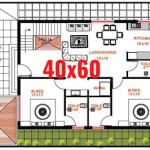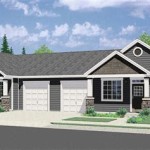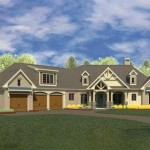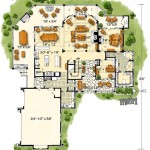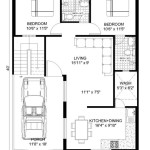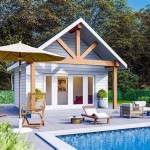Lakefront House Plans With Walkout Basement: Maximizing Views and Functionality
Building a home on a lakefront property presents unique opportunities to blend the natural beauty of the surroundings with functional living spaces. Lakefront house plans with a walkout basement are a popular choice for homeowners seeking to maximize their enjoyment of waterfront living. This design strategy capitalizes on sloping lots, seamlessly connecting indoor living areas to the outdoors while utilizing the basement level as a fully functional and accessible part of the home.
A walkout basement, unlike a typical basement, has at least one wall that is entirely exposed to the exterior grade, allowing for doors and windows. This feature transforms the basement from a potentially dark and isolated space into a bright, airy extension of the main living areas. The design allows for easy access to the lakefront, making it ideal for recreation, entertainment, and relaxation.
Selecting the right lakefront house plan with a walkout basement requires careful consideration of several factors, including the topography of the land, local building codes, the desired style of the home, and the intended use of the basement space. This article will explore key considerations and benefits associated with lakefront house plans featuring walkout basements.
Optimizing the View and Natural Light
One of the primary benefits of a lakefront house plan with a walkout basement is the opportunity to maximize views of the lake and surrounding landscape. The design allows for large windows and sliding glass doors on both the main level and the basement level, flooding the interior with natural light and providing panoramic views.
Strategic placement of windows and doors is crucial. The layout should take advantage of the prevailing sunlight patterns, minimizing glare and maximizing natural light throughout the day. Consider incorporating features such as transom windows above doors, skylights, or light wells to further enhance natural illumination in the basement.
The orientation of the house on the lot is also critical. Ideally, the main living areas and the walkout basement should face the lake, offering unobstructed views and easy access. This orientation also helps to passively regulate temperature, reducing the need for artificial heating and cooling.
Landscaping plays a vital role in enhancing the views. Thoughtful landscaping can frame the views of the lake, soften the transition between the house and the natural environment, and provide privacy. Consider using native plants that are adapted to the local climate and require minimal maintenance.
The design of the deck or patio area outside the walkout basement is also important. The size and style of the deck should complement the architecture of the house and provide ample space for outdoor living. Consider incorporating features such as a covered porch or pergola to provide shade and protection from the elements.
Enhancing Functionality and Living Space
A walkout basement significantly expands the usable living space of a lakefront home. It can be utilized for a variety of purposes, depending on the homeowner's needs and preferences. Common uses for a walkout basement include guest suites, recreation rooms, home theaters, home offices, and storage areas.
A well-designed walkout basement can function as a self-contained living area, providing privacy and independence for guests or family members. This is particularly useful for multi-generational families or for homeowners who frequently entertain visitors. A guest suite in the walkout basement might include a bedroom, bathroom, living area, and kitchenette.
For homeowners who enjoy recreation and entertainment, the walkout basement can be transformed into a game room, a home theater, or a wet bar area. These spaces can provide a dedicated area for leisure activities, away from the main living areas of the house. Soundproofing the walls and floors can help to minimize noise transmission to other parts of the house.
A home office in the walkout basement can provide a quiet and private workspace, away from the distractions of the main living areas. Natural light and views of the lake can enhance productivity and creativity. Consider incorporating features such as a built-in desk, bookshelves, and storage cabinets.
Even with other uses, the walkout basement often provides ample storage space. This is particularly useful for storing seasonal items, outdoor equipment, and other belongings. A well-organized storage area can help to keep the main living areas of the house clutter-free.
Accessibility is a key consideration when designing a walkout basement. Ensure that there is a direct and convenient access point to the lakefront. Consider incorporating features such as a ramp or gentle slope to make the access easier for people with mobility issues.
Addressing Site-Specific Challenges and Building Codes
Building a lakefront home with a walkout basement presents unique challenges that must be addressed during the design and construction phases. These challenges include dealing with sloping lots, managing groundwater, complying with local building codes, and minimizing environmental impact.
Sloping lots require careful grading and excavation to create a level area for the foundation and the walkout basement. The design should take into account the natural contours of the land, minimizing the amount of earthwork required and preserving the natural landscape. Retaining walls may be necessary to stabilize the soil and prevent erosion.
Groundwater is a common concern in lakefront properties. A proper drainage system is essential to prevent water from entering the basement. This system may include subsurface drains, sump pumps, and waterproofing membranes. The foundation should be designed to withstand hydrostatic pressure from the surrounding soil.
Local building codes and regulations vary depending on the location. It is essential to consult with local authorities and obtain the necessary permits before starting construction. Regulations may address issues such as setbacks from the lake, building height restrictions, and environmental protection measures.
Environmental impact is a major consideration when building on a lakefront property. The design and construction should minimize disturbance to the natural environment and protect water quality. Erosion control measures should be implemented to prevent sediment from entering the lake. Native plants should be used in landscaping to provide habitat for wildlife and to reduce the need for irrigation and fertilizers.
The foundation design is critical for the structural integrity of the home. The foundation should be designed to withstand the weight of the house, the pressure of the surrounding soil, and the effects of frost heave. A structural engineer should be consulted to ensure that the foundation is properly designed and constructed.
Selecting appropriate building materials is important for durability and longevity. Materials that are resistant to moisture and rot are particularly important in a lakefront environment. Consider using materials such as concrete, stone, and treated lumber.
Energy efficiency is another important consideration. The design should incorporate energy-efficient features such as insulation, high-performance windows, and energy-efficient appliances. This will help to reduce energy consumption and lower utility bills. A well-insulated walkout basement can significantly reduce heating and cooling costs.
Proper ventilation is essential to prevent moisture buildup and mold growth in the basement. A ventilation system can help to maintain a healthy indoor air quality and prevent damage to the structure of the house. Consider installing a dehumidifier to control humidity levels in the basement.
Designing a lakefront house plan with a walkout basement offers many advantages, including maximizing views, enhancing functionality, and expanding living space. However, it also presents unique challenges that must be addressed during the design and construction phases. By carefully considering these factors and working with experienced professionals, it is possible to create a beautiful and functional lakefront home that will provide years of enjoyment.

Dream Lake House Plans With Walkout Basement

House Plan 5 Bedrooms 3 Bathrooms 3912 V1 Drummond Plans

New Lakeside House Plan With S

Plan 17500lv Great American Retreat Lake House Plans Craftsman Style

Sloped Lot House Plans Walkout Basement Drummond

House Plan 3 Bedrooms 2 5 Bathrooms 3992 V3 Drummond Plans

Craftsman Style Lake House Plan With Walkout Basement

Rustic Mountain House Floor Plan With Walkout Basement Lake Plans Cottage

Small Cottage Plan With Walkout Basement Floor

Plan 027h 0071 The House



